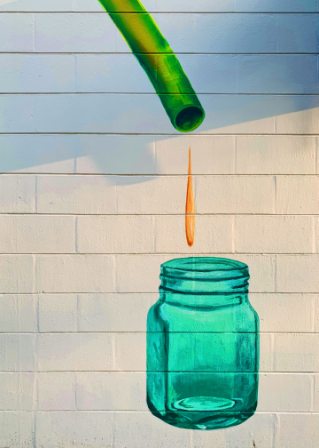 P.T. Barnum had it right when he said there’s one born every minute.
P.T. Barnum had it right when he said there’s one born every minute.
Now, I don’t mean the ones that hang around on the bottom of the Lamoille River or the ones who didn’t believe that Lance Armstrong was doping. Or even those that still don’t believe the first ingredient in some peanut butter is sugar.
I mean the ones who believe that thick sweet syrup comes from a tree ready to eat. Or the ones that believe that sap comes from a tree and makes syrup—but they are not sure what kind of a tree it comes from or where these trees grow. One of this latter type came into my office during sugaring one year—and I saw her coming.
I have been known to consider a practical joke once in a while. That spring I pulled off my best effort ever.
It started by my cutting down a maple sapling four inches in diameter and 10 feet tall, with branches going every which way. I strapped it to the top of my car and headed for my office at Mount Mansfield Union High School, where I was a guidance counselor.
I arrived early and cut the tree so I could wedge the trunk against the tile floor and the top against the ceiling tile. Next, I trimmed the branches so they spread out on both sides of the trunk, and left one near the top so it hung over the top of the office door. It looked quite natural standing there.
I then drilled a hole through the tree—and on through the wall into my office at the same height.
I attached a metal spout to one end of a small rubber tube and hammered the spout into the tree. The other end of the tube I invisibly threaded through the tree and through the wall into my office. Next I ran the remaining tube up the office wall and hung it on a nail.
I dangled a water-filled quart bottle from the ceiling and attached it to the tube. Our chemistry teacher provided me with a metal clamp; this enabled me to control the flow through the tube. None of this background apparatus was easily visible looking at the tree.
Next I hung a metal bucket on the spout embedded in the tree. Now I was ready.
Before any students arrived, I adjusted the clamp so it allowed a small amount of water to run down through the wall, through the tree and out the spout. Drip, drip, drip it began. Ping, ping, ping it sounded as it hit the bottom of the metal bucket.
As students began filtering into the office they were amazed to see sap running in the guidance office. They pointed out that it wasn’t running very well. I told them to come back at noon when the sun was out and it would be running better. At 11:45 I loosened the clamp to allow more water to enter the tube—the sap ran faster. They laughed and went out to tell their friends. Soon, kids were stopping by the office just to see how the sap was running each day.
Then it happened. One morning we had a visitor from a college admission office. She was so excited to see the way sap ran from a tree and wanted to learn more about the sugaring process. I explained the process—as only a Vermonter could. As she left to visit classes, I encouraged her to come back at noon when the sap would really be running. She did—and so my lesson continued.
At the end of the day when she came back to my office she stood in front of the tree looking at it with questions in her eyes. Finally, she realized the tree was just sitting on the floor. When total realization set in, her thoughts teetered between embarrassment and revenge.
We later became friends but, even now, when we get together, she takes me to task over the time I gave her my “sugaring lesson.”
Bill Skiff grew up on a farm between Cambridge and Jeffersonville. After a career in education, he now lives in Williston, where he is a justice of the peace and Fourth of July frog-jumping official. In “Places I’ve Played,” he shares his experiences of growing up in Vermont.







 Related Articles & Free Subscription
Related Articles & Free Subscription
Comment here